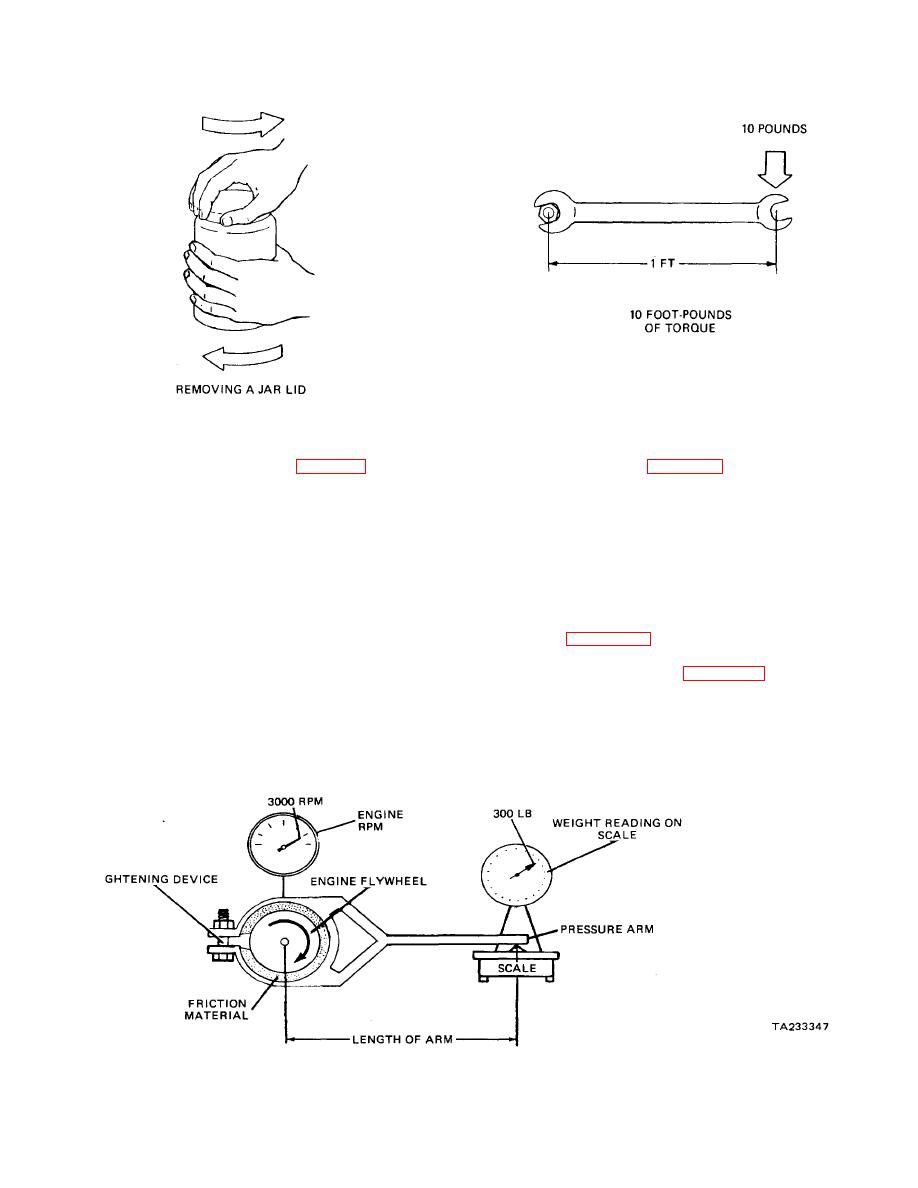
| Tweet |

Custom Search
|
|

|
||
 TM 9-8000
Figure 2-60. Torque Effect.
c. Converting Torque to Work (Fig. 2-63).
d. Engine Torque (Fig. 2-64). The engine
The amount of work that is accomplished when a
exerts torque to drive the automobile. The amount
torque is given can be calculated if the amount of
of torque produced by the engine generally will
movement in complete revolutions also is given.
increase with speed within the engine's opera-
(Remember, there is no work accomplished
tional range. As the speed increases beyond the
unless there is movement.)
operational range, the engine torque will fall off.
This is because of decreases in volumetric
For example: a 100-ft lb. torque is applied to a
efficiency at excessive speed.
shaft to rotate it six times. How much work is
accomplished? Work can be found with the
2-33. Torque-Horsepower-Speed (RPM) Re-
following formula:
between speed, torque, and horsepower for a
6.28 x number of rotations x torque,
given engine. As illustrated in figure 2-65,
horsepower will continue to increase with speed
therefore:
even after torque begins to fall off. The reason that
this happens is because horsepower is dependent
6.28 x6x 100ft lb. = 3,768ft lb.
on speed and torque. The horsepower will
Figure 2-61. Pony Brake
2-39
|
||
 |
||